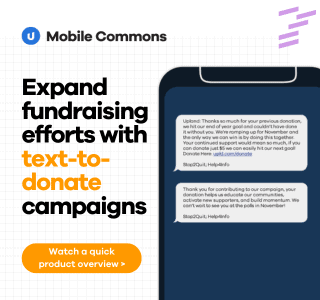In a world of email, phone calls, and social media, cutting through the noise to engage with your audience can be a challenge, but there are channels to help you overcome these hurdles.
46% of people in this study state they reply to brands who send text message blasts, and with an open rate of 98%, using SMS in your messaging strategy could mean higher engagement with your audience is one text message away. While SMS offers the benefits of reach, familiarity, and immediacy, you still need to decide on a number that works best for your business, in this case a dedicated short code versus a 10-digit long code (10DLC). We’ll take you through both options, including their pros and cons, to help you decide.
What are dedicated short codes?
A dedicated short code is a 5 or 6-digit number used to send text messages from businesses to many people through a software program; this type of text messaging is called application to person (A2P) messaging. Short code numbers can be assigned randomly or chosen as a vanity number – typically a repetitive, memorable number (e.g., 662266).
Wireless carriers dedicate more and wider “lanes” of traffic to support short code messaging, which offers the highest throughput and fastest send times. Exact rates are determined through agreements between the carriers and providers and can range from 100s of messages per second up to 1,000s/second. There are no daily volume caps on short code messaging, enabling organizations with the largest list sizes to message to any segment or their list in its entirety.
Like your social media handles or website address, a dedicated short code offers better brand recognition. Shorter numbers are easier to associate with your organization, promote, and remember. And with delivery receipts, you will know exactly how many of your messages were received, giving you better insight into your reach along with the ability to optimize campaigns (when combined with other messaging data).
With more control, due to owning every aspect of the number, including the keywords you choose (e.g., text SAVE to 662266), and with full support for both SMS and MMS messaging, a dedicated short code gives you the highest performing option. Not only can you quickly send to many, but you can send content that excites!
Our recommendation
Dedicated short codes are best for any business or organization who values using a trusted, recognizable number, those who prefer to include multimedia content in their messages, and those who send time-sensitive communications to large audiences. But bear in mind that they do have a longer registration time – up to 6 weeks after documentation is submitted to the carriers.
The DL on 10DLC – What are 10-digit long codes?
To answer the question, let’s start with local long codes – the 10-digit phone numbers people use to call or text each other. They were originally designed for an individual to send text messages to another from their mobile device or a software program; this kind of text messaging is called peer-to-peer (P2P). Local long codes were never intended for A2P text messaging and aren’t subject to the same legislation as short codes. Enter 10DLC, a new kind of long code designed for A2P messaging that includes a registration and vetting process before obtaining a number.
Why create a distinction? Well, in the past, when organizations didn’t want to or couldn’t budget for the fees associated with a dedicated short code, they simply shared one or used a local long code. But, as text message marketing grew in popularity, so too did opportunities for bad actors to exploit both the inability for wireless carriers to set boundaries on the number of and types of companies sharing a short code and the utter lack of regulations on long code text messaging.
To better control the industry and reduce the frequency of spam, the major US carriers announced the discontinuation of shared short code service along with the availability of 10DLC, specifically to offer a low-cost, regulated option for A2P messaging on long code numbers. With 10DLC now available on all the major wireless networks, businesses and organizations have a safe alternative to dedicated short codes.
When you register for a 10DLC, the size of your organization, its industry, and its messaging use case(s) will be used to determine a trust score. The rate at which you’ll be able to send messages and the maximum number of messages you’ll be able to send on a daily basis, depend on your score. The rate and volume caps vary and are determined by the carriers, but a good estimation to use is 30 messages per second and fewer than 200,000 messages a day.
Businesses can convert their existing, local long code number to 10DLC and add text messaging capabilities to their voice service. 10DLC also offers a shorter registration time with an estimated 3-5 days required to register campaigns and receive a trust score.
Our recommendation
10DLC is best for any business with lower volume messaging needs that are not time-sensitive or include images, gifs, or video; those who would like to associate their text messaging program with their local area code or existing phone number; and those with budget constraints. While 10DLC does not offer the full reporting capabilities and delivery confirmations of dedicated short codes, through Upland Mobile Messaging other simple metrics can be tracked.
To find out more about whether short code or 10DLC is better for your business, take our quiz or speak to a member of the team today.


